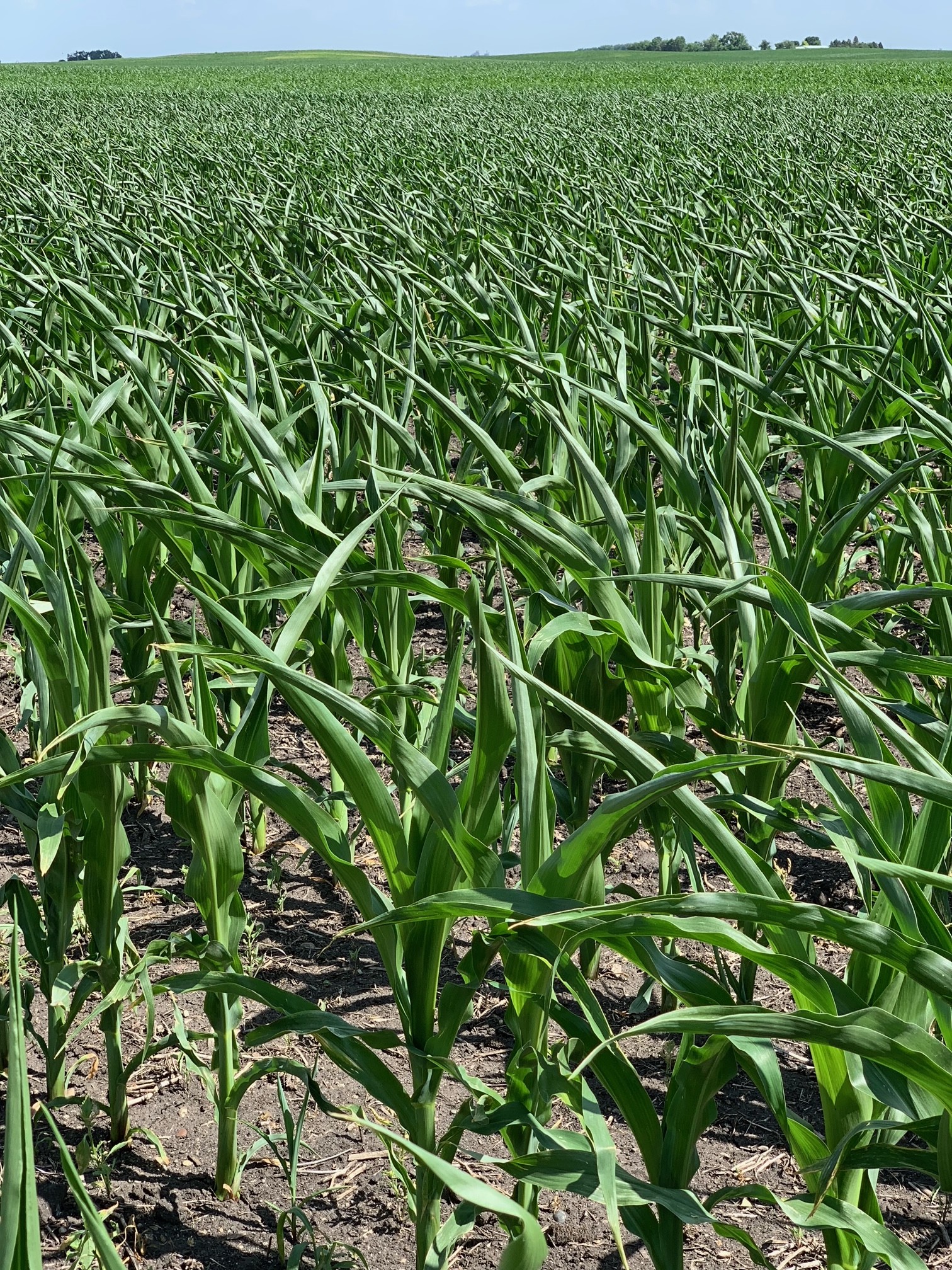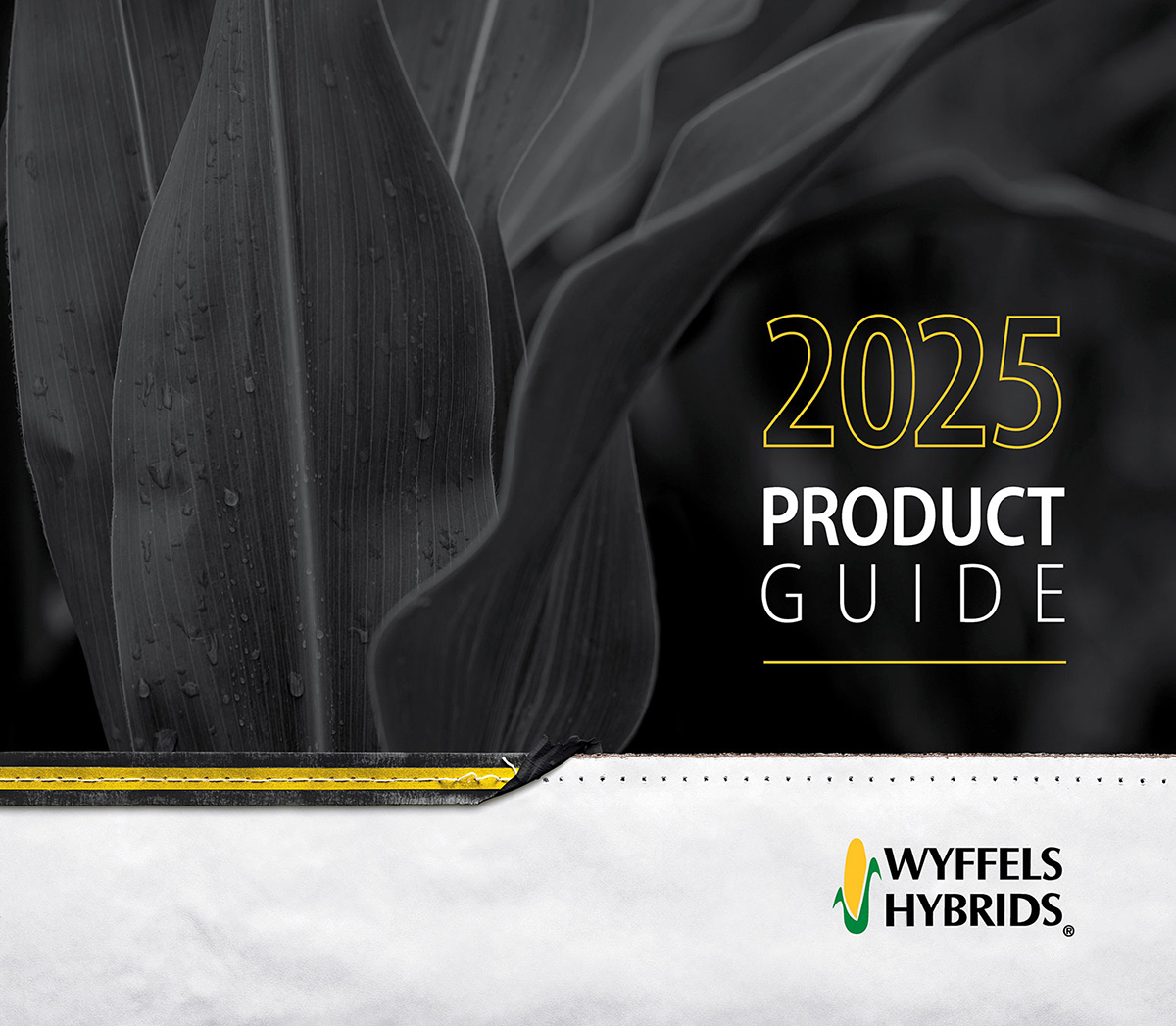Compounding Factors
It is rare for a June drought to seriously impact the corn crop in the Central Corn Belt, but we are beginning to see the effects of excessive heat in some areas. Typical symptoms are leaf rolling throughout the day and slower growth. Symptoms are worse in fields where root growth has been limited due to compaction, shallow planting, or soils that missed recent rains.
Limited root growth and dry soils reduce the plants’ ability to uptake essential nutrients. Soil moisture is needed by soil microbes to convert some nutrients into a plant available form, and to move and transfer the nutrients to developing roots.
Roots also need moisture to grow. If the soil moisture line moves down the soil profile faster than the roots can grow, plants will suffer. Heat and wind speed up soil moisture loss, especially in tilled fields. Young corn does not provide much canopy and allows soils to rapidly heat up, which can also inhibit root growth.
Impact on Yield
Given the rarity of severe drought conditions in June, not much data is available on its impact on corn yield. It is still safe to say yield loss from drought and heat will depend on duration and severity. The following chart shows yield loss estimates at various stages for a corn crop that shows severe stress symptoms for four or more consecutive days. Yield loss from drought is most severe during pollination and early grainfill, but early season stress can also begin to impact yield.

Leaf rolling during the heat of the day is not necessarily a bad thing. Leaf rolling is a natural defense mechanism to conserve water and can be beneficial to a point. Severe drought and heat stress symptoms include tight leaf rolling from dawn until dusk, a greenish-gray cast to corn leaves, leaf wilting, or in extreme cases, leaf burn.

Impact on Corn Development
To better understand how stress impacts corn at various growth stages, we need to understand what is going on in the corn plant during this time. Even though we can’t see it yet, there are some key yield determinations being made during early vegetative growth.
Corn in the V4 to V8 stage is determining ear girth, leaf number, and leaf size. From V8 to pre-tassel, corn is determining ear length, leaf size, and plant height. Because of this, severe stress during these vegetative growth stages can limit kernel numbers and result in shorter plants with smaller leaves, which will limit photosynthesis. Under extreme conditions (no rainfall, limited subsoil moisture, and 90+ degree temps) leaf tissue can be lost. Persistent drought and heat stress also causes vegetative growth to progress more rapidly, shortening the time to flowering and reducing our primary period of nutrient uptake.
Fortunately, corn is a resilient plant during the vegetative stages and can withstand severe stress, but as with any biological organism there is a tipping point and moisture is essential for growth and development.
No Throwing in the Towel
With the exception of irrigation, there are not a lot of in-season management options to alleviate drought stress. One thing to keep in mind, is to never give up on a corn crop until it shows you that it’s done. At this point, we’re counting on everything we’ve done to put the crop in the best situation for success to buy the crop time until we can catch a rain. We are a long way from a doomsday scenario, but depending on the duration and severity of the drought, if we keep missing rains we will begin to lose some yield potential.
